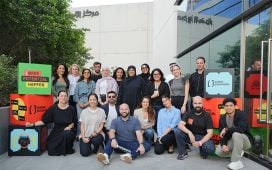Bill Bernbach came up with a great idea in the 1950s: to pair up words with pictures. But as our industry has changed so much since then, why has this set-up remained the same, Jonathan Burley asks
Troubling Love Letter
To Jim Bolton
Let me begin with one simple, inarguable fact: I admire Jim Bolton. I have known the man for nearly a quarter-of-a-century and he has been my dearest friend and creative partner for the past 12 years. He is the yin to my yang, the Eric to my Ernie, the shish to my kebab. We smoke the same delicious brand of cigarettes, watch the same Netflix boxsets rage against the same idiotic politics. We both share a very white, very middle-aged appreciation of old-school h
To continue reading this article you need to be registered with Campaign. Registration is free and only takes a minute. Register Now or sign in below if you already have an account.
You Might Also Like
Haleon and Centrum transform how we see health
Dec 15, 2025
Sports marketing: The culture of play
Dec 15, 2025









